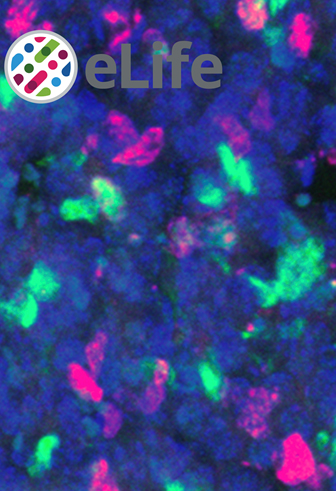Elife. 2021 Jan 5;10:e59142. doi: 10.7554/eLife.59142.
John P Russell 1, Xinhong Lim 2 3, Alice Santambrogio 1 4, Val Yianni 1, Yasmine Kemkem 5, Bruce Wang 6 7, Matthew Fish 6, Scott Haston 8, Anaëlle Grabek 9, Shirleen Hallang 1, Emily J Lodge 1, Amanda L Patist 1, Andreas Schedl 9, Patrice Mollard 5, Roel Nusse 6, Cynthia L Andoniadou 1 4
Affiliations
1 Centre for Craniofacial and Regenerative Biology, King’s College London, London, United Kingdom.
2 Skin Research Institute of Singapore, Agency for Science, Technology and Research, Singapore, Singapore.
3 Lee Kong Chian School of Medicine, Nanyang Technological University, Singapore, Singapore.
4 Department of Medicine III, University Hospital Carl Gustav Carus, Technische Universität Dresden, Dresden, Germany.
5 Institute of Functional Genomics (IGF), University of Montpellier, CNRS, Montpellier, France.
6 Howard Hughes Medical Institute, Stanford University School of Medicine, Department of Developmental Biology, Stanford University School of Medicine, Stanford, United States.
7 Department of Medicine and Liver Center, University of California San Francisco, San Francisco, United States.
8 Developmental Biology and Cancer, Birth Defects Research Centre, UCL GOS Institute of Child Health, London, United Kingdom.
9 Université Côte d’Azur, Inserm, CNRS, Nice, France.
Abstract
In response to physiological demand, the pituitary gland generates new hormone-secreting cells from committed progenitor cells throughout life. It remains unclear to what extent pituitary stem cells (PSCs), which uniquely express SOX2, contribute to pituitary growth and renewal. Moreover, neither the signals that drive proliferation nor their sources have been elucidated. We have used genetic approaches in the mouse, showing that the WNT pathway is essential for proliferation of all lineages in the gland. We reveal that SOX2+ stem cells are a key source of WNT ligands. By blocking secretion of WNTs from SOX2+ PSCs in vivo, we demonstrate that proliferation of neighbouring committed progenitor cells declines, demonstrating that progenitor multiplication depends on the paracrine WNT secretion from SOX2+ PSCs. Our results indicate that stem cells can hold additional roles in tissue expansion and homeostasis, acting as paracrine signalling centres to coordinate the proliferation of neighbouring cells.
PMID: 33399538
DOI: 10.7554/eLife.59142

